How to Crate Train a Dog with Separation Anxiety
Tips for Crate Training your Dog to Prepare for Travel
If your dog suffers from separation anxiety, the best thing for them will be to create a space where they feel safe and happy when you leave the house. This way, you can teach them to enjoy or, at the very least, tolerate being left alone. Many dogs—even rescue dogs with difficult pasts—can learn to feel more at ease being alone when they have a familiar, comforting space of their own.
If you are planning on traveling with your dog, crate training prior to travel is going to help make their trip as comfortable as possible, regardless of whether they suffer from separation anxiety issues. We always recommend organizing to have your crate delivered to your home and having the process started as soon as possible.
How to Crate Train your Dog and Reduce Separation Anxiety
Dogs, by nature, are drawn to smaller spaces where they feel safe and secure. A crate mimics a den-like environment, acting as a ‘safe haven’ or ‘security blanket’ for your dog. By creating a space where your dog can retreat without being disturbed, you help them build positive associations with crate time. This is especially important for dogs with confinement anxiety. Getting your dog comfortable in a closed crate well before travel ensures a more relaxed and stress-free journey.
Some dogs, especially those with past challenges or limited exposure to crates, may experience crate anxiety. Being in a confined, unfamiliar space can cause stress and discomfort until they feel safe and secure in their new environment.
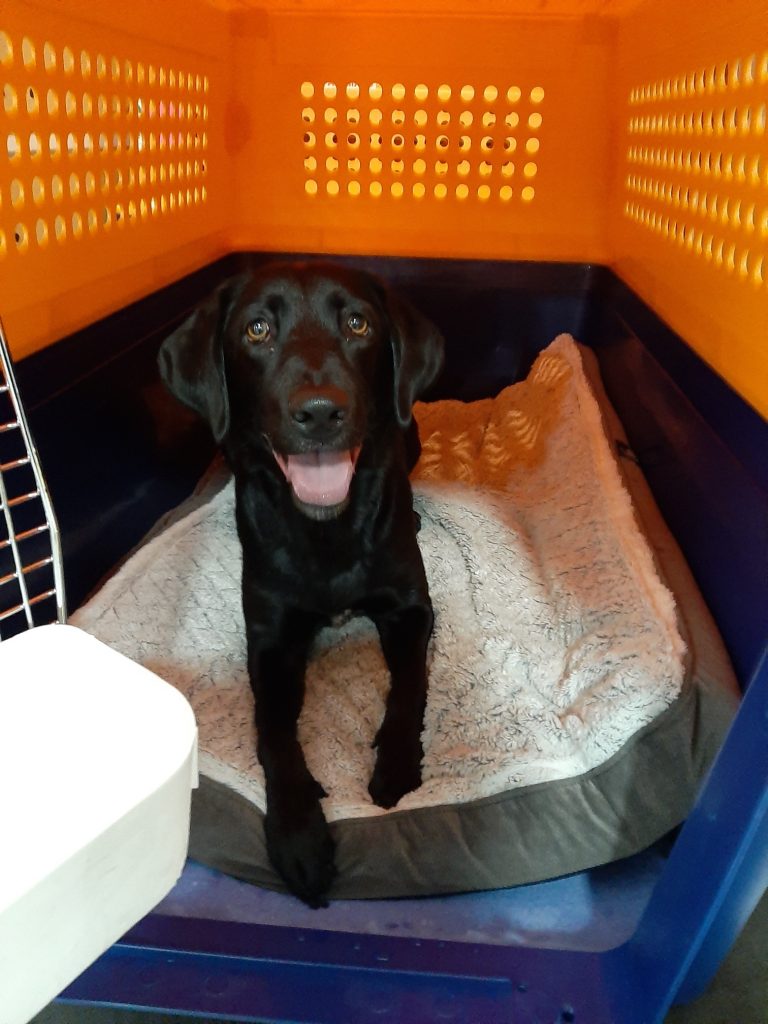
1. Pick the right crate
Choosing the right crate is the first step in setting your dog up for success. The crate should be large enough for your dog to stand, turn around, and lie down comfortably, but not so big that it feels overwhelming. A properly sized crate helps your dog feel secure and supported throughout the training process. For dogs prone to anxiety, a well-fitted crate can offer a sense of comfort and safety. Look for well-ventilated, airline-approved options if you’re preparing for travel. Picking the right crate lays the foundation for reducing your dog’s anxiety and building a positive crate experience.
2. Start with the Base
We suggest starting with just the base of the crate. Place this in a central part of the household (living room, TV room, etc) – somewhere your pet likes to spend time. Make the crate inviting and comfortable for your dog by putting a favorite rug or towel in the bottom to help them ease into it.
This gentle introduction allows your dog to explore the crate without pressure and begin associating it with calm, familiar surroundings. Including this training as part of your dog’s routine from the beginning can help prevent separation anxiety by making the crate a safe, everyday space, not just a place for confinement.
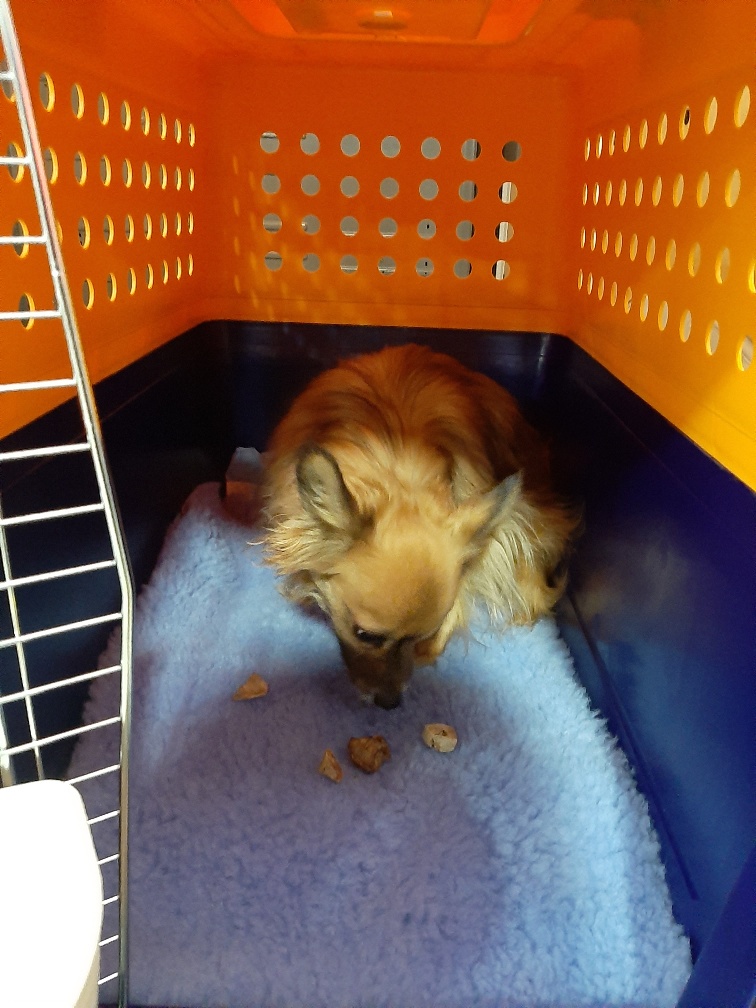
3. Entice with a Treat
From here, your dog’s curiosity should be spiked, leading them to go over and investigate. When your dog does go near the crate, reward them by throwing a food treat into the crate or near its entrance. Repeat this every time your dog goes near the crate. If your dog settles down inside the crate, reward this behavior either with your voice or with food rewards. You want your dog to view the crate as a wonderful place to be, full of goodies and fun. Another great tip is getting your dog used to a command such as “crate” or “bed” when they enter voluntarily.
Another way to encourage your dog to use the crate, even when you’re not around, is to leave the crate door open and hide treats inside. This allows your dog to explore the crate at their own pace and associate it with positive experiences, without the added pressure that can trigger anxiety.
4. Attach the Top Half of Crate
Once they seem to be adjusted to the base of the crate on their own, attach the top half of the crate cover and secure it, leaving the door off for now. Repeat the above steps of rewarding your pet when they happily enter or investigate the crate. Use positive reinforcement to help reduce your dog’s stress levels and build a calm, confident association with crate time.
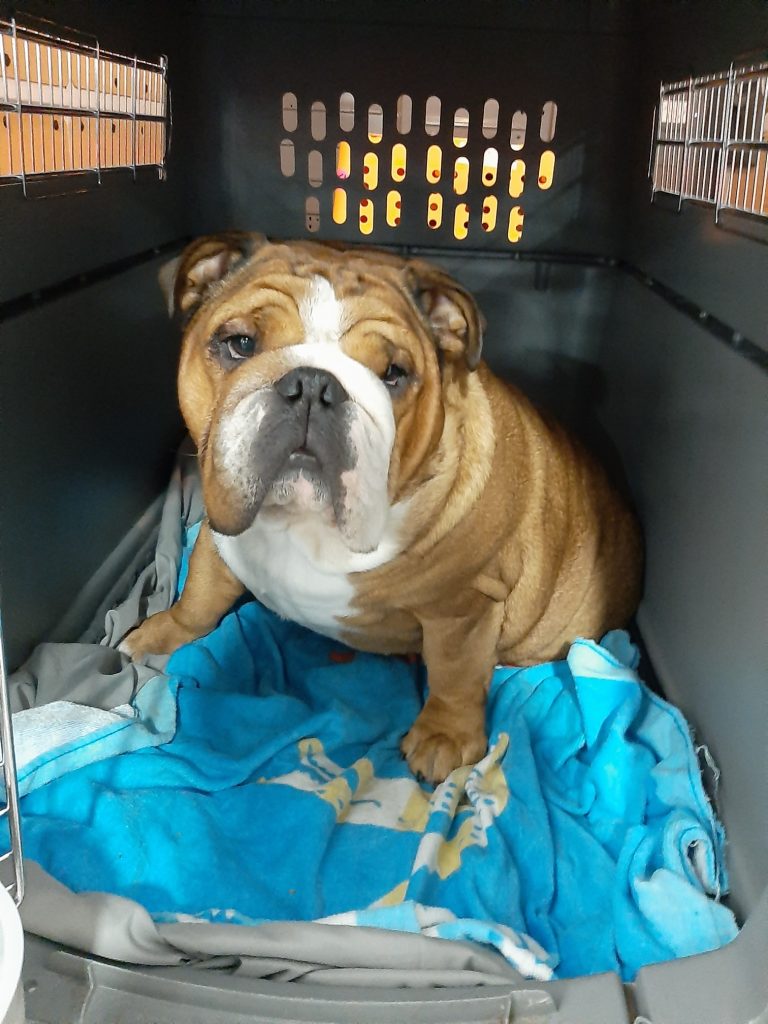
5. Give Meals in the Crate
Next, begin offering your dog’s regular meals in the crate to help build a positive association with the space. Start with short periods, especially if your dog shows any telltale signs of distress—you don’t want them to become discouraged or associate crate time with discomfort. Place the food bowl inside the crate and gently encourage your dog to enter. If they go in and eat comfortably, continue feeding them in the crate regularly. Over time, gradually increase how often and how long they spend in the crate during meals to reinforce it as a calm, safe part of their daily routine.
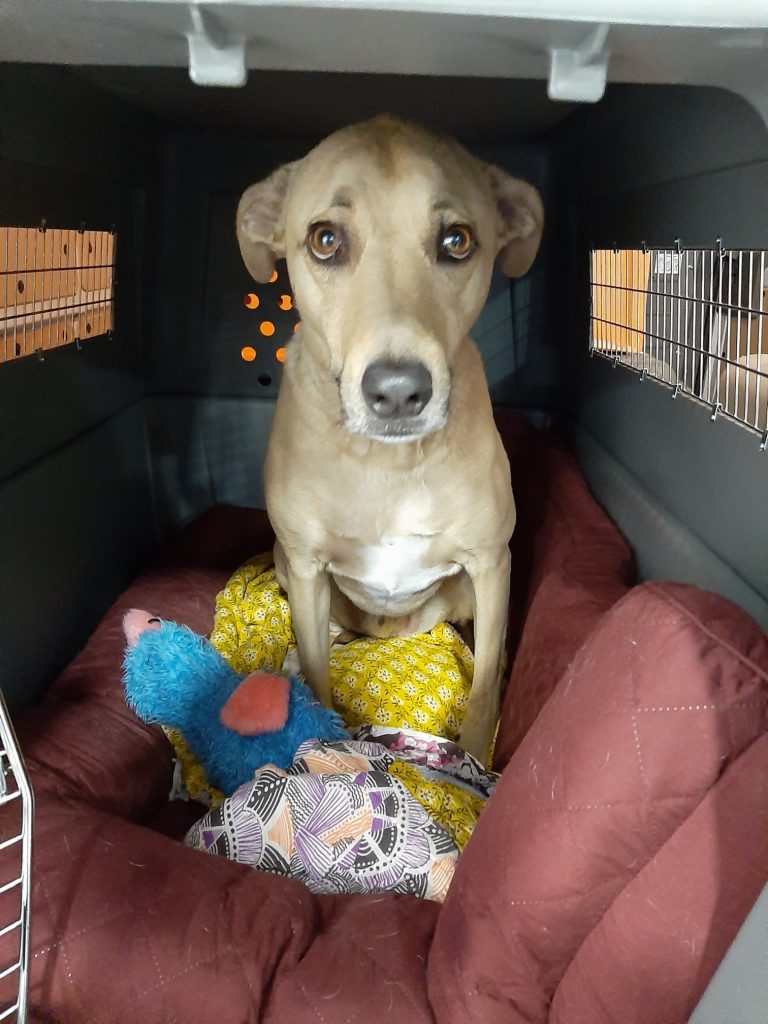
6. Introduce the Door
As your dog becomes more comfortable eating in the crate, you can introduce the door. Start by only closing the door as your dog eats its meal, and make sure you open it before they finish. Over time, your dog will adjust, and then you can gradually leave the door closed for a few minutes longer after meals. Soon, your dog will happily stay in its crate after a meal and maybe even take a nap break.
At first, being closed in the crate, your dog may whine. If so, try your best to ignore the behavior and reward your dog by letting them out and giving them a treat as soon as they quiet themselves. Keep repeating this and leaving your dog for a little longer each time.
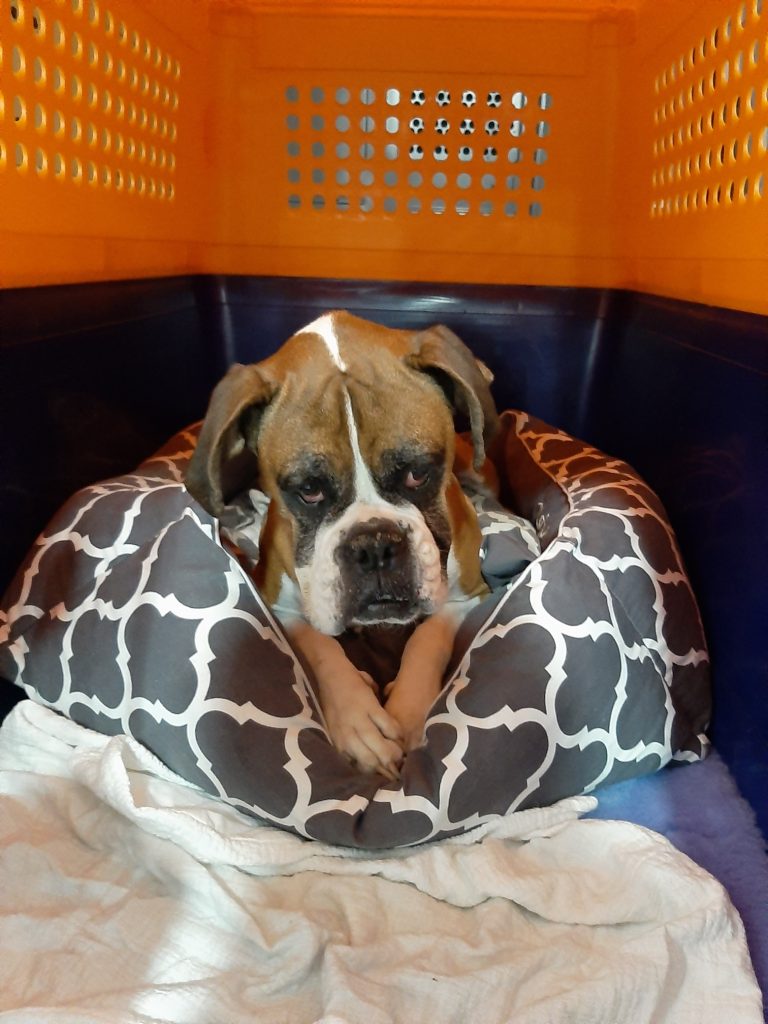
7. Bedtime in the Crate
Once your dog is happy in the crate for about 10 – 15 minutes after finishing their meal, you can start to confine them to the crate for longer periods. At this stage, I recommend moving the crate to your dog’s sleeping space.
Make sure your dog has toys or a couple of treats with them to initially settle them into the new bedtime routine. With young puppies or older dogs, you may need to take them out for toilet breaks during the night. They will whine if they need a toilet break. Some dogs might whine at first to simply exit the crate and sleep elsewhere. I suggest taking the dog out as though they’re going to use the toilet, if they don’t go, returning them back to the crate to reinforce their new sleep space, all while using your chosen voice command.
8. Interactive Toys
Toys provide valuable mental stimulation and can help your dog feel more relaxed and content during crate time. Puzzle toys, treat-dispensing balls, or chew-safe favorites that your dog loves are great ways to keep them engaged and prevent destructive behavior. Including your dog’s favorite toys in the crate helps them feel more at ease and creates a positive association with their space. Mental stimulation is especially important when your dog is confined for longer periods, as it reduces boredom and anxiety. Over time, your dog will come to see the crate as a rewarding and safe space to be.
9. Certified separation anxiety trainer
If your dog is struggling to settle in the crate or shows signs of distress when left alone, it may be time to look into professional separation anxiety training. A Certified Separation Anxiety Trainer (CSAT) can help create a customised plan to ease your dog’s separation anxiety using gentle, proven methods. These trainers focus on building your dog’s confidence and helping them feel secure when alone or confined. If travel is coming up, early support can make a big difference in helping your dog adjust to their crate and reduce stress during the trip.
Give them time to adjust
It can take a couple of weeks for your dog to fully adjust to their crate, so patience is key. A consistent routine will help your dog feel more secure and comfortable over time. Once they’re settled, many dogs come to love their peaceful crate space and will happily run to it when you use the voice command “crate” or “bed.” With time, the crate becomes a familiar, safe place your dog can rely on—whether you’re home or away.
We hope this information helps as you get your pet ready for their travels!
